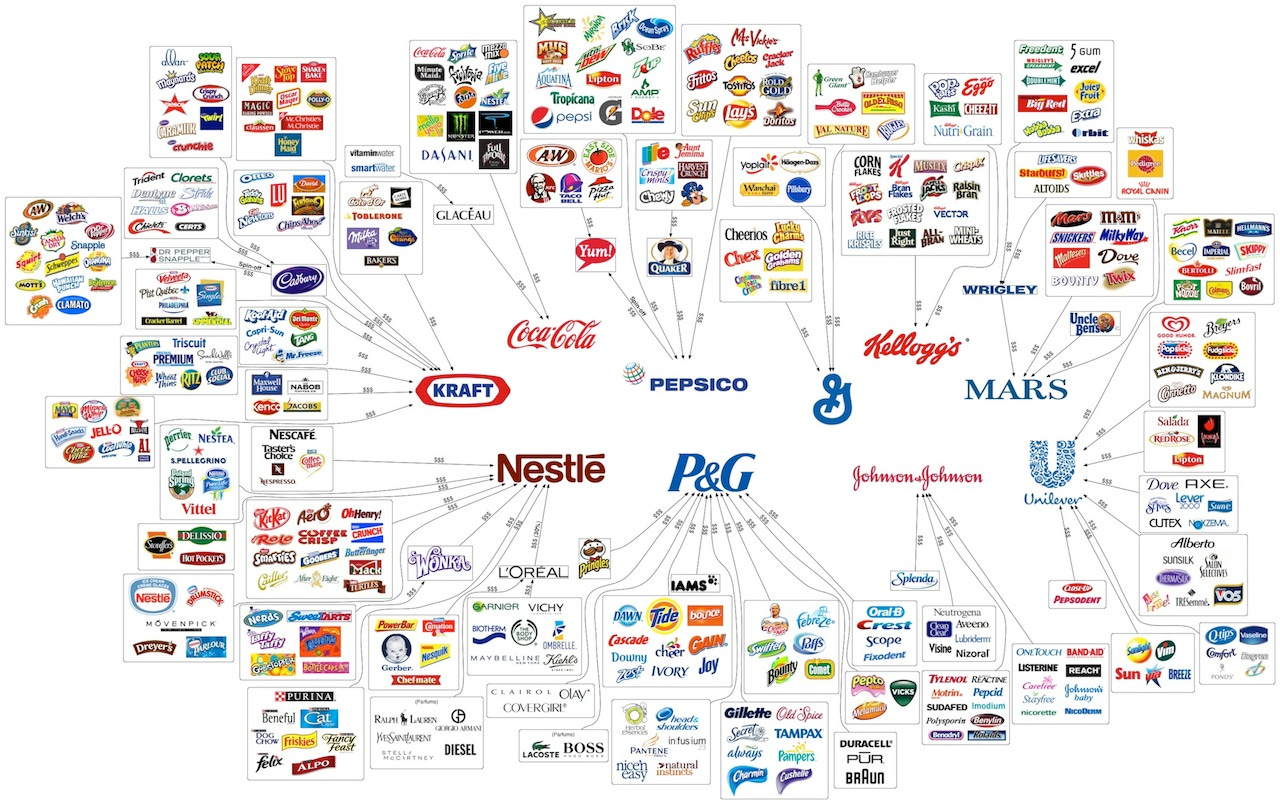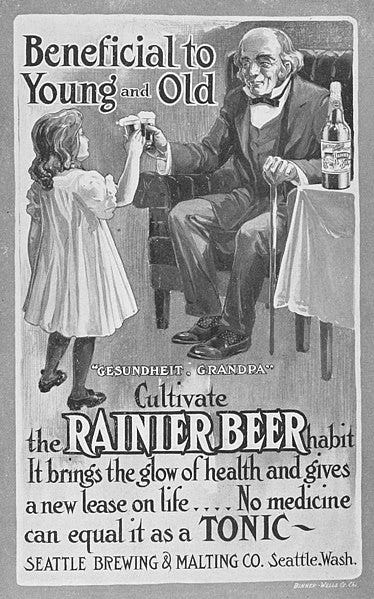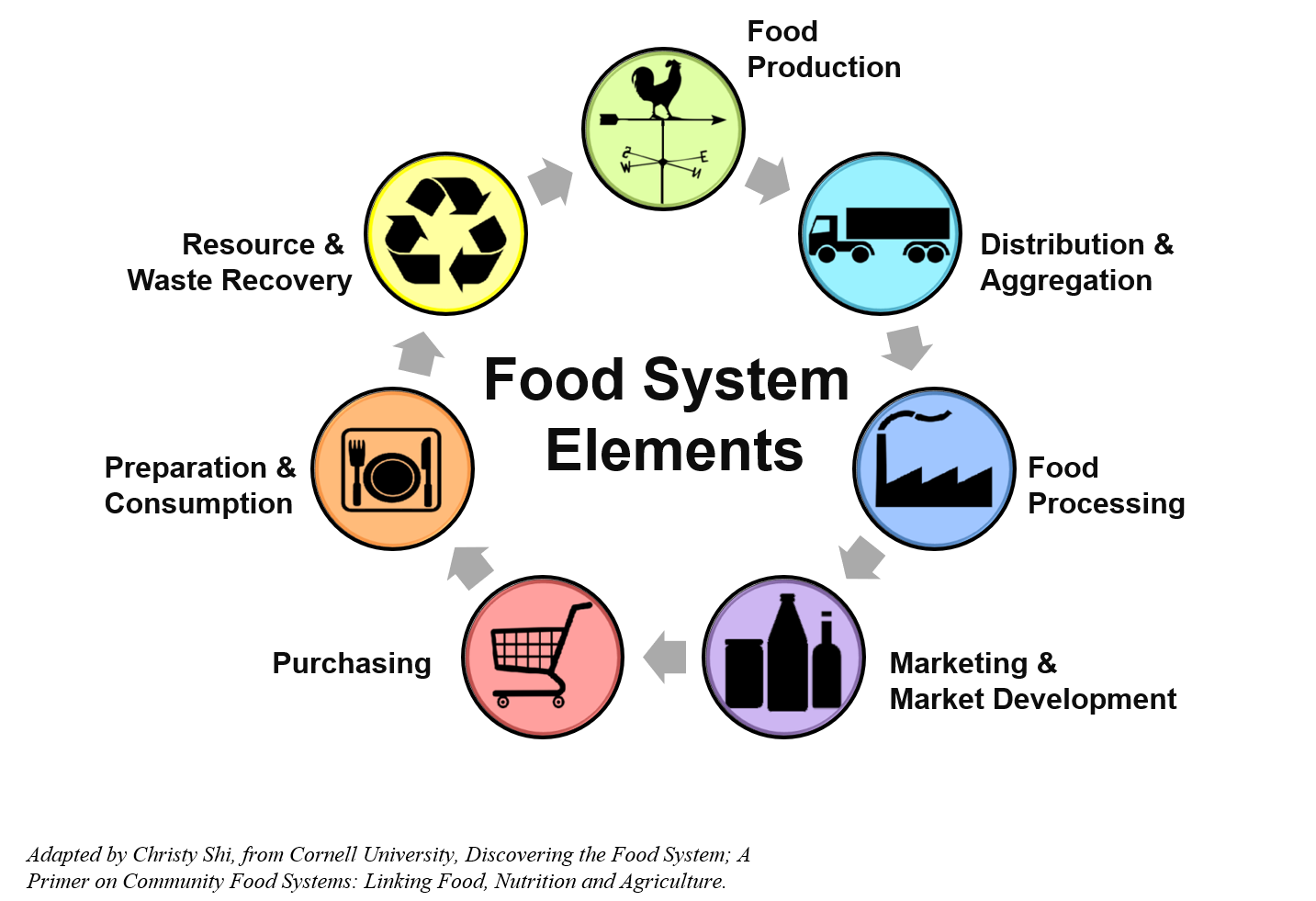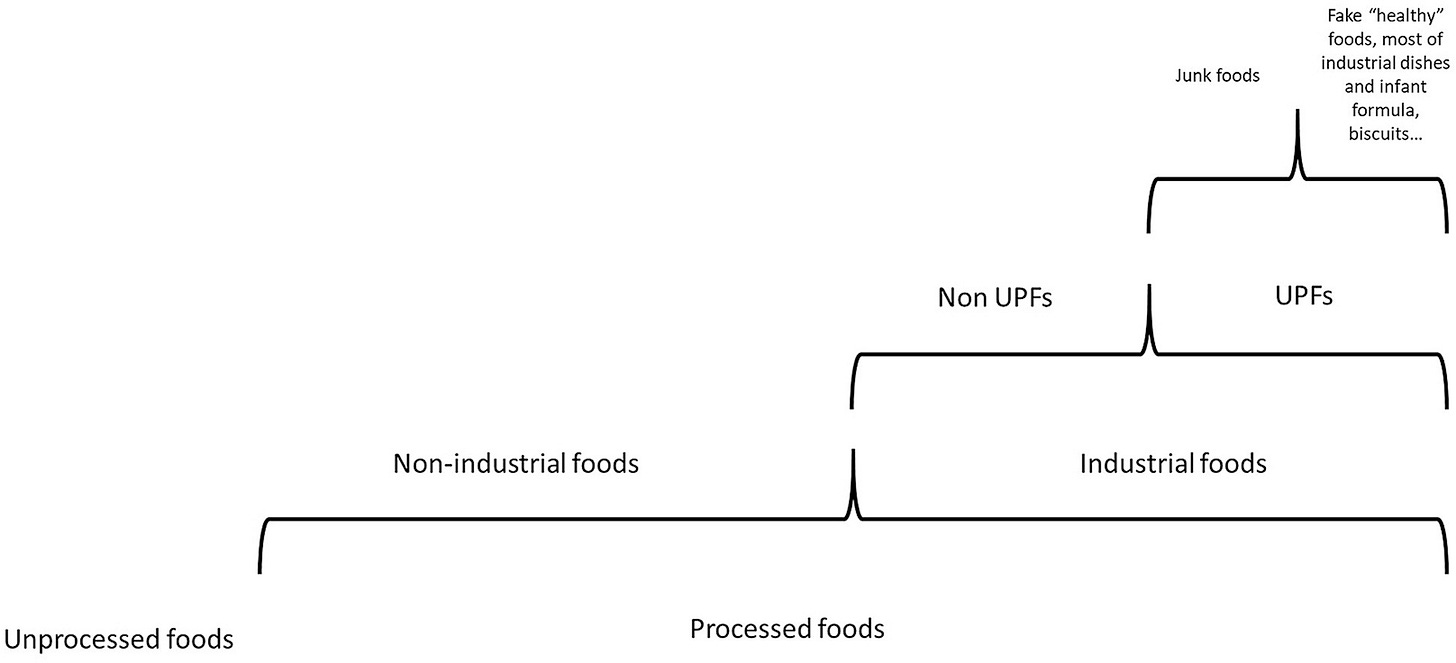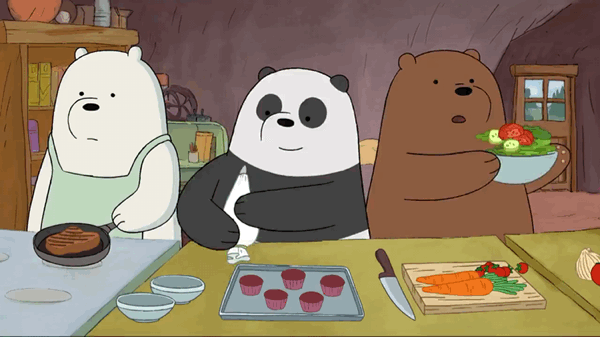Allô! 👋
This month, a special edition. I hope you'll enjoy.
See you soon with new recipes,
👋simone
on (real) food
We have come to a point where many of us are eating more ultra-processed “food” than we are (real) food. That's a big problem.
what is ultra-processed food?
To fully grasp what an ultra-processed food is, I recommend making time to read this paper, this paper, and this paper.
Ultra-processed foods (UPFs) are not synonymous with junk food (#notallburgers), and they are quite sneaky in that they can often go beyond the obvious “unhealthy” discretionary food item conveniently placed on the grocery shelf.
To me, the key to understanding what they are is to realise the following:
1) they are not food; they are edible food-like substances whose building blocks include fractioned elements of whole foods (usually extracted and refined into sugars, oils and fats, proteins, starches and fibres) that are often submitted to chemical modification and industrial tampering, before being mixed with colours, flavours, emulsifiers, thickeners, artificial sweeteners, and other additives whose function is to make these products resemble real food and mimic its flavours, odours, and textures in an artificial, exaggerated way (that is compelling and potentially addictive), as well as to prolong their shelf-life to make them more sellable;
2) they are more-often-than-not manufactured, packaged, distributed, marketed, promoted, and lobbied aggressively by a small number of large, powerful transnational corporations — their purpose is not to nourish, but to generate maximum profit. In the process, these corporations' strategies collectively contribute to the displacement of home-cooked meals, the undermining of healthy habits, the erosion culinary tradition, and the erasure of generational food knowledge and culture on an international scale, as well as contributing significantly to a rise in noncommunicable disease and reduced lifespans across the planet (globally, poor diets are estimated to be the leading cause of death and disease). Their sheer scale and exorbitant revenues, combined with a profit-above-people-and-planet disregard for the quality of the products they design, market, package and distribute, also enable them to squeeze out and eradicate smaller, more local, food businesses everywhere.
an industry driven by deception
Much like the tobacco and alcohol industries (there is, in fact, noteworthy overlap), the corporate food (ultra)processing industry (also known as “Big Food”) employs numerous tactics — often deceptive — to saturate markets, maximise profits and appease shareholders, all while maintaining the image of being in business to benefit those who purchase and consume their products.
Common messaging promoted by the industry include the ideas that cooking is difficult, time-consuming, messy, confusing, and even potentially dangerous. That home-cooked food is boring (if not disgusting). That added vitamins, protein and fibre — and reduced fat and sugar — are synonymous with healthfulness. That nutrients and calories are all that matter. That drinking soft drinks, energy drinks and vitamin drinks is cool, and that artificial sweeteners are healthy and safe. That ready-to-eat or ready-to-heat “foods” are a better deal than meals you can prepare yourself, and that fast food products resembling pizza, hot dogs, nuggets, and fries are the only things that children are willing to eat. That if you're looking to lose weight, exercise is what you should really focus on — though diet “foods” with prominently-displayed calorie information can happily be part of a healthy lifestyle. In essence, the UPF industry has us profitably deceived.
If government entities attempt to regulate the unreasonable promotion of these industrially-crafted products, the corporations who manufacture them are quick to appoint lobbies, make claims of paternalistic “nanny state-ism”, clamour for individuals' freedom of choice (if most or all that is available to eat around you is UPF, how much choice do you actually have?), and loudly use easy-to-fall-for logical fallacies and ethical arguments to claim that those who rely the most on their products will suffer most from their regulation. These are but a few commonly-used industry tactics and corporate strategies, though it is worth noting that they are ever-adapting and context-dependent.
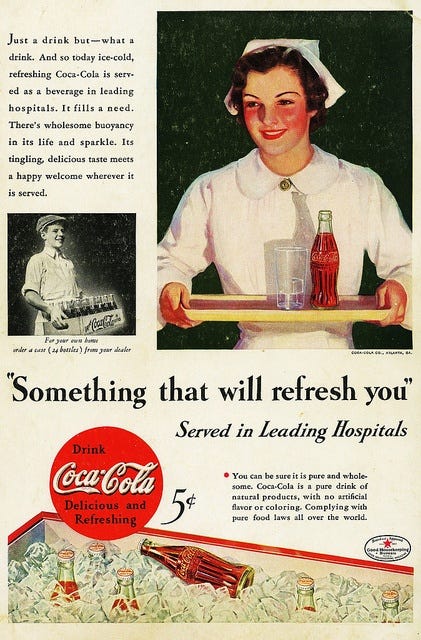
What's more, they have been fine-tuned for so long that they have become a normalised part of our everyday landscape. The ads above may seem outrageous today, but a closer look at what is being advertised to us today reveals that truly, not much has changed.
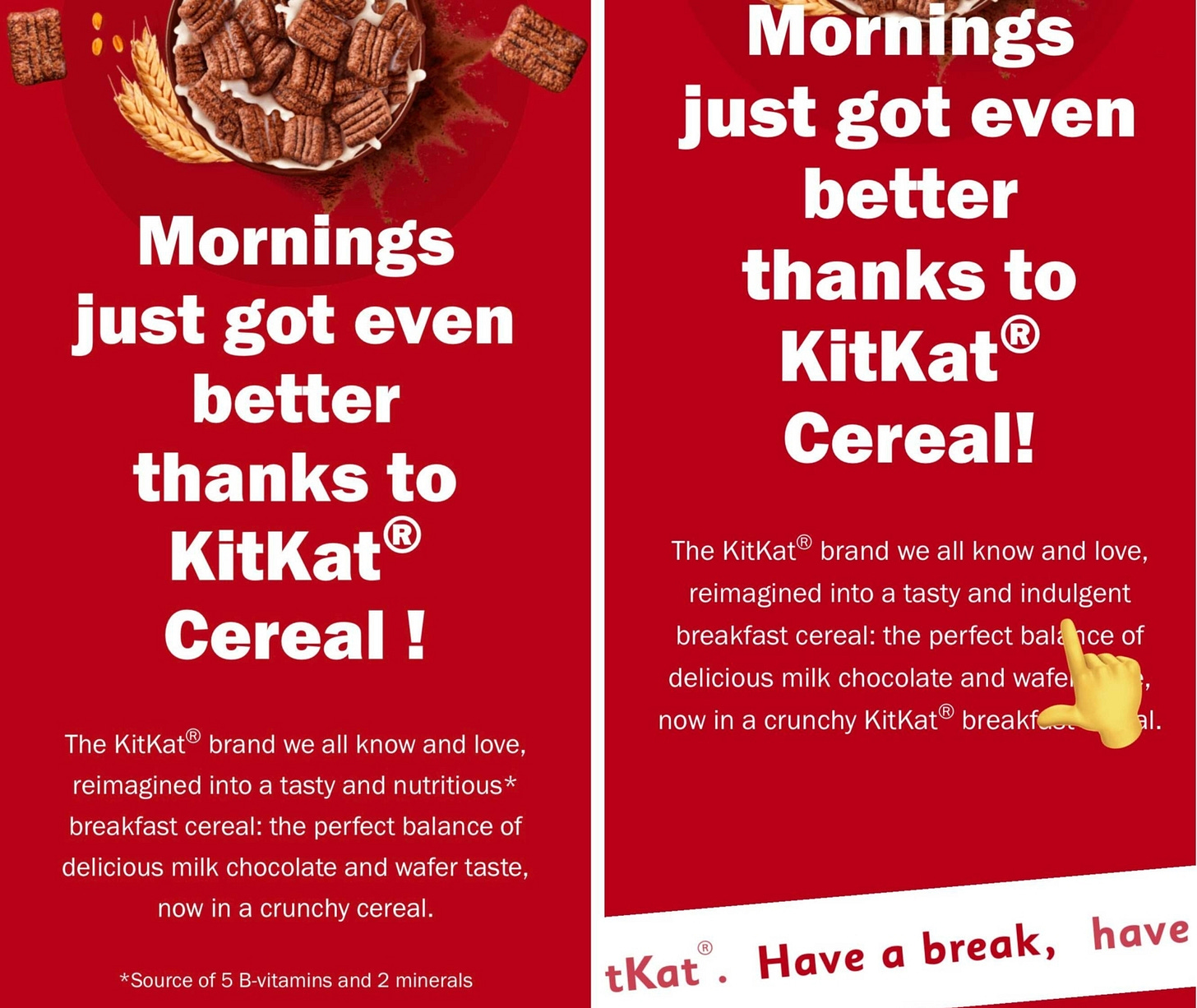
problematic in more ways than one
Ultra-processed foods now make up more than 50% of most Western countries' calorie intakes (up to 68% in the UK, while roughly 73% of the American food supply is ultra-processed), with this percentage being typically higher in children and youth, as well as in more vulnerable and/or underprivileged subsets of population. Not only are UPFs harmful to social equity and children's rights, but they are also increasingly studied as a potentially significant contributor to the global burden of preventable disease and death 1,2,3.
Increased consumption of ultra-processed food-like products has thus far been associated with:
• increased risk of lower IQ, poor dental health, increased weight, ADHD, and respiratory diseases in children
• reduced verbal function in preschoolers whose mothers had higher UPF consumption during pregnancy
• increased risk of developing gestational diabetes and preeclampsia in pregnancy
• increased risk of depression, anxiety and other mood dysregulations and disorders
• poorer memory and reduced cognitive function
• reduced satiety, increased appetite, and weight gain
• increased risk of developing type-2 diabetes and other metabolic disorders
• increased risk of cardiovascular disease, such as heart attacks and strokes
• increased risk of infertility in men
• increased risk of certain cancers
• increased risk of cognitive decline, dementia, and Alzheimer's disease
...and more.
As well as negatively impacting the health, habits, and traditions of those who purchase their products, these powerful UPF-producing corporations also have significant negative social and environmental impacts.
what can be done to fix the problem?

For the harm-producing activities of the corporations who profit from the marketing of UPF to be regulated, a top-down approach is necessary. Industry self-regulation doesn't work, and efforts toward product reformulation are considered by many to be a mere distraction. Much like mandating seatbelt use and banning smoking indoors, restricting the advertising and sale of UPF will be difficult — but its impact on attitudes and behaviours will be long-lasting.
At the level of national and local jurisdictions, governments not only need to make unhealthy food products less accessible, affordable, and acceptable, but they also need to do the opposite with healthy foods and food products. This can look like UPF taxes*, mandatory health warnings on UPFs, restrictions of UPF sales to people under 18, and UPF advertising bans (sound familiar? these tactics are already employed for cigarettes and tobacco), as well as subsidies for fresh produce and non-UPF products (i.e. real food) so that healthier options are always the most affordable.
To accompany these policies, incentives need to be put in place at every nexus of the food system: farmers, food manufacturers, grocers, business owners, private organisations, and public institutions all need support and incentives to produce, prepare, and sell real, healthy, diverse, sustainable food options. At the same time, existing environmental, cultural, economic, and systemic barriers to the preparation of real food need to be identified and dismantled.
*far from being impossible to carry out, Colombia is the latest country to have introduced such a tax (as of November 2023)
Cities need to not only make fresh local foods more available and accessible, they also need to provide more third places for people to socialise so that citizens (young people and seniors especially) do not have to resort to fast food establishments as hang out spaces. Neighbourhoods need to work together to make farmers markets, community gardens, and local greengrocers more prevalent and popular. Employers need to cultivate work cultures that enable healthy eating behaviours, like giving employees enough time and money to prepare and/or purchase real food outside of work hours, and the time and place to enjoy it in between work tasks. Schools need to involve students in the serving of lunch (and sometimes breakfast), and teach culturally-relevant growing, cooking, and preservation of food. Hospitals needs to recognise the impact meals have on both staff and patients' physical and mental health, and adjust offerings accordingly. The media also has a role to play. Newspapers should stop taking ads from Big Food. Journalists need to cover these stories more keenly. TV producers need to fund more shows that teach viewers how to grow and cook real food, and how transnational food corporations profit from harming people and planet. Influencers need to recognise their role in shaping young people's minds and refuse industry dollars, if not call out UPF manufacturers who reach out for sponsorship deals.
The avenues for improvement are numerous. At home, in our streets, at school, at work, on our screens — change can happen fast. The more we know about the problem, the better we can tackle it. Take back control. Reject ultra-processed food systems. And recognise, reclaim, and celebrate real foods.
what is (real) food, and how to tell it apart from UPF?
(Real) food. What is it? A quick search will yield numerous, similar, definitions, all describing food in one way or another as a nourishing substance that can be consumed for sustenance and/or growth. By extension, the term “nourishing” generally designates something one consumes that contains substances that help promote the healthy functioning of the body and mind. From a philosophical standpoint, food can therefore encompass any ingestible substance that contributes to the promotion of cultural, emotional, and social well-being as well as physical and mental health.
(Real) food can then essentially be understood as a substance derived from edible whole plant and/or animal ingredients, and can include anything from fruits and vegetables to herbs and spices, nuts and seeds, unrefined plant and animal fats, meats, eggs, and dairy, and/or legumes and grains, consumed in combination or alone, and prepared in a way that renders them suitable for consumption — using methods that range from washing, shelling, peeling, boiling, drying, fermenting, pickling, canning, and freezing to steaming, roasting, baking, poaching, braising, etc. — so long as they have not been processed or refined to the point of no longer being nourishing, or to the point of being harmful to health.
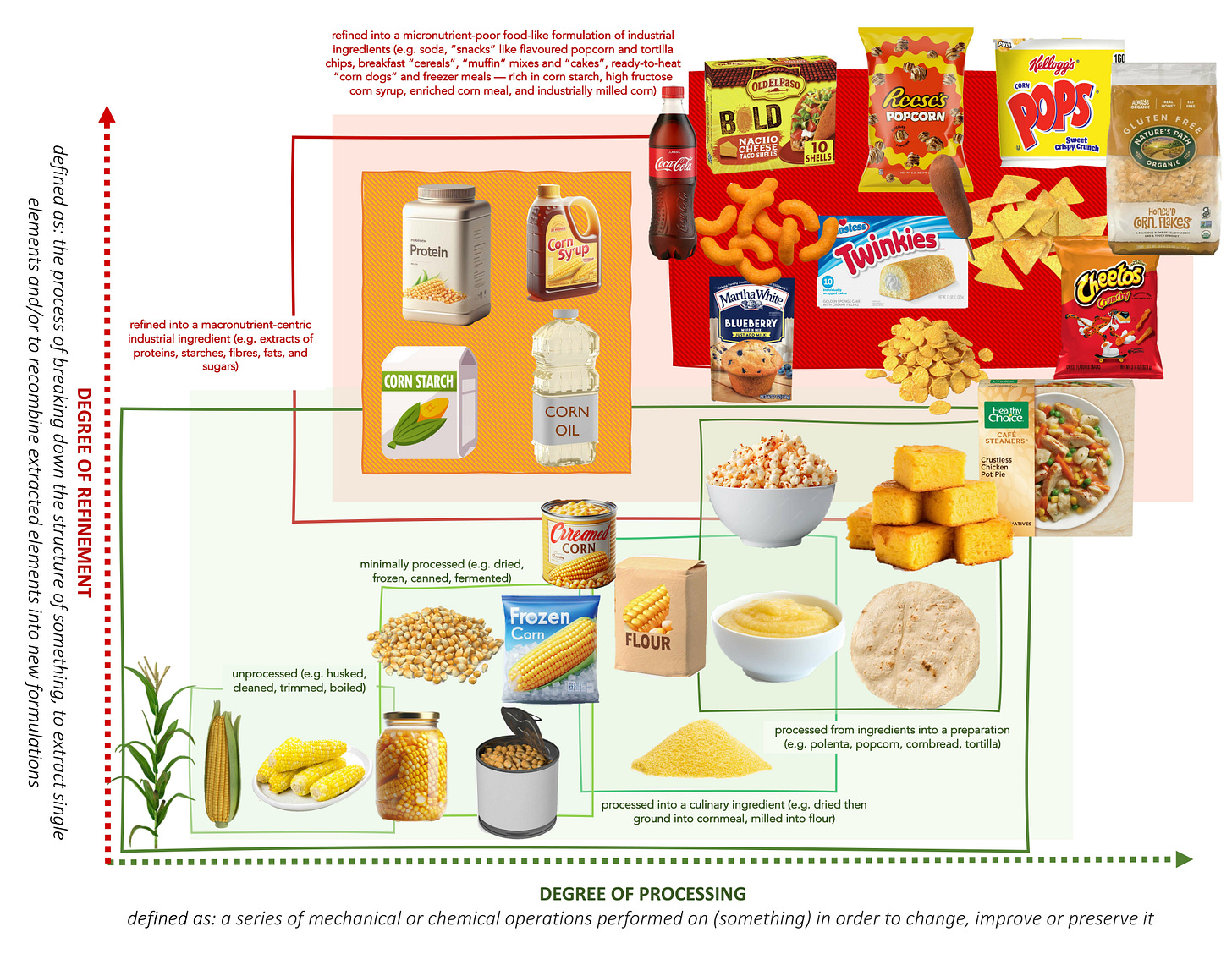
One can then for example begin to make the distinction between stone-milled whole grain flours and so-called enriched flours (refined bleached flours which, by virtue of having been stripped of nutrition, then must have nutrients extracted from other sources added back in)† at the ingredient level, and consequently, at the prepared food level, the distinction between supermarket “cakes” made with enriched flours, refined oils, emulsifiers, starches, colourings, flavourings, gums and more, and a homemade or bakery cake containing only the quality flour mentioned above, butter or olive oil, sugar, and eggs (with perhaps some fruit, nuts, full-fat cream and/or spice).
At the end of the day, if it is alluringly packaged (especially with some sort of health or nutrient claim or cartoon character on the front) or is sold by a fast food chain, is made by a brand name who can afford to advertise in mass media (billboards, TV ads, bus ads, product placement in film and TV, subway ads, social media ads, celebrity endorsements, sports team and/or influencer partnerships, etc.) — especially if the ads say nothing of the product itself, but instead work hard to associate it with happiness, fulfilling friendships, or some other socially positive messaging — and is reproducible to an exact degree on a mass scale (i.e. you can purchase the same product seasons and/or miles apart and find it to be quite identical every time), it is well worth looking at the back of the pack or searching (often online) for an ingredient list that may betray its industrially-formulated origins‡. In other words, it is well worth identifying whether the product is potentially harmful, not actually food, and whether its manufacturer is trying to fool you into believing otherwise.
As soon as you figure out a personal system for quickly recognising UPFs vs (real) foods, the power returns to you. Your choices become informed, and so does your consent. And if you find that removing UPFs from your landscape leaves you and your community with little to no choice for real foods, you'll know that the system has failed you. And that the time to rally change has come.
where to learn more
Find more resources on UPFs, (real) food, and general information on how to eat in a world filled with fake foods here.
†beyond that, one could also contrast stone-milled whole grain from ancestral heritage wheat varieties grown organically in accordance with the principles of permaculture and regenerative agriculture, versus genetically modified, chemically-sprayed, high-yield and disease-prone monocultures that are ecologically destructive and only profitable to a powerful few on unsustainable scales and timeframes... but let's tackle one thing at a time, shall we?
‡common culprits include, but are not limited to: enriched flours (e.g. wheat), protein isolates (e.g. whey, pea, soybean), modified oils (e.g. palm, soybean, vegetable), refined starches (e.g. corn, rice), fibres, whey, gums (e.g. cellulose, xantham, locust bean, guar), preservatives, emulsifiers (e.g. soy lecithin, sunflower lecithin, carrageenan, mono- and diglycerides), refined sugars (invert sugar, high fructose corn syrup, glucose syrup, dextrose), natural and artificial colours and flavours
That's all from me this time!
See you again very soon 💛
This was a Substack edit of an archived newsletter. To read the newsletter in its original format, click here.





